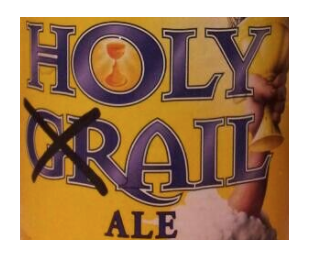Price Characteristics and Indicator Effectiveness

There is NO SUCH thing as the perfect indicator. Further more, even if you find the almost perfect indicator, there is no such thing as the optimal setting. A 50-day SMA works great for one stock and lousy for another. 14-day RSI nails the oversold bounces for one stock, but never becomes oversold for another. MACD (12,26,9) holds its upturns sometimes and whipsaws other times. In short, the Holy Grail for indicators, indicator settings and timeframes does not exist. We could "curve fit" our indicators to make them look good on past price action, but this does not mean they will work the same going forward.
Price charts have different characteristics and this means one indicator or setting does not fit all. For example, a utility stock is going to act much different than a biotech stock because utilities are less volatile. Even if two stocks are in the same group with similar volatility profiles, one stock could be in a strong uptrend and the other could be in a trading range. This can even happen when analyzing the price chart for a single stock because it can move from uptrend, to trading range and back to uptrend over a period of time. These shifts will change the way the indicators work.
Indicators Work and Don't Work
The chart below shows two semiconductor stocks with very different price charts. The Intel chart shows that moving averages do not work well in trading ranges. The Applied Materials chart shows the 50-day SMA working well during the advance from December to May, and not working during the trading range from June to September.
The next chart shows Amgen with 14-day RSI and three technical events. Note that RSI becomes oversold with a move below 30. First, the indicator became oversold in October, but Amgen continued lower with a gap down (bad signal). Second, RSI became oversold in late May and nailed the low for the move (good signal). Third, the stock bottomed in August, but RSI did not become oversold and missed the move. Thus, RSI(14) has been hit and miss for Amgen.
The next chart shows AbbVie with 14-day RSI becoming oversold just once in late October/early November 2016. The stock then advanced throughout 2017, but RSI did not dip below 30 during this advance and did not provide an oversold signal. Chartists looking to buy the oversold dips would have been left out using these settings.
RSI(5) versus RSI(10)
Let's use RSI as an example when considering indicator settings. Sometimes RSI(5) nails the oversold readings and price lows, and sometimes the indicator dips below 30 several times before marking a price low. Sometimes RSI(10) works like a charm, and sometimes it doesn't. Sometimes you feel like a nut ....
Keep in mind that RSI(5) will become overbought or oversold more often than RSI(10) because it has fewer periods and is more sensitive. The chart below shows IJR with RSI(5)(green) and RSI(10)(red) in the same indicator window. Notice that RSI(5) dipped below 30 several times from March to August, while RSI(10) did not become oversold from March to July.
Traders looking for more signals and shorter setups would likely prefer RSI(5), while traders looking for fewer signals and pullbacks that are a little deeper would likely opt for RSI(10). Despite their differences, notice that the line shapes for RSI(5) and RSI(10) are quite similar. The range is the biggest difference between the two. 5-day RSI ranges from 10 to 99, and 10-day RSI ranges from 24 to 88.
Zones, Alerts and Price Action
Personally, I prefer RSI(5) for the major index ETFs like SPY, QQQ and IJR. These broad ETFs are usually less volatile than individual stocks so I opt for more sensitivity. I prefer RSI(10) for individual stocks because RSI(5) reaches extremes too often and RSI(14) does not reach extremes often enough. I also use RSI(10) for sector ETFs, industry group ETFs and other ETFs. The key is to make a choice, study the indicator and learn how it works. It is just like learning anything. You have to put in the time to actually learn. There are no quick fixes.
In addition to a general preference for RSI(10), I use oversold zones and look for some sort of upturn. The chart below shows the Biotech SPDR (XBI) for an example. A dip into the 20-40 zone tells me that XBI is undergoing some sort of a pullback or correction. RSI turns up with a move back above 40, but not all upturns result in bottoms. Despite this seemingly bogus signals, this is still valuable information for Chartists. Namely, a pullback is underway and we should be on guard for an upturn in prices.
The gray vertical lines show RSI dipping into the 20-40 zone several times over the past year. Notice that there were sometimes two dips before the actual price reversal and sometimes three dips. Sometimes there is just one dip. The indicator is indicating a pullback, but price does not always turn up right away and this is when some basic chart analysis is needed. I then turn to the price chart and look for evidence of a short-term bullish reversal. This could be a candlestick reversal, a trend line break, a gap up or a mini resistance breakout.
Keep in mind that indicators are good at indicating. Unless you are using a quantitative system based on indicator signals, an indicator signal should alert Chartists to check the price chart - early and often. Price, after all, is the final arbiter. Oversold RSI puts the setup in place and price action delivers the actual signal.
******************************************************
ETF Master ChartPack - 300+ ETFs organized in a Master ChartList and in individual groups.
Follow me on Twitter @arthurhill - Keep up with my 140 character commentaries.
****************************************
Thanks for tuning in and have a good day!
--Arthur Hill CMT
Plan your Trade and Trade your Plan
*****************************************











